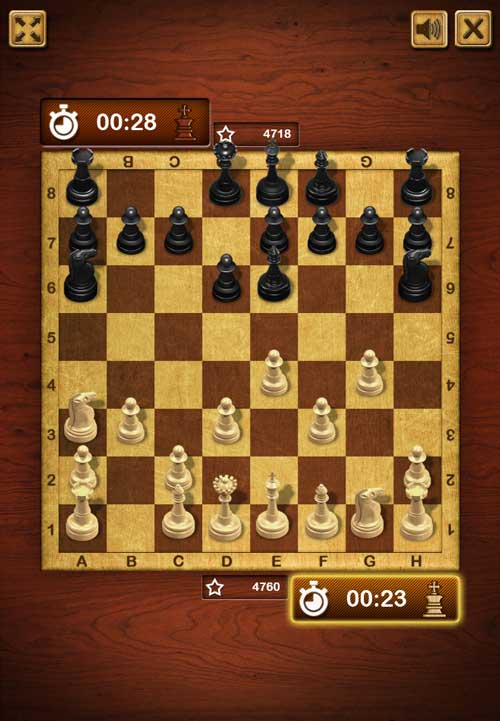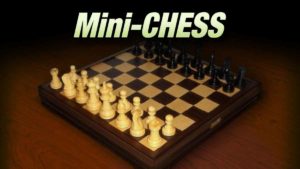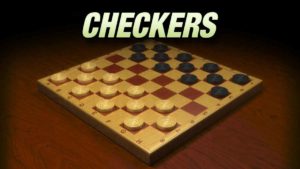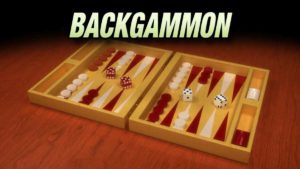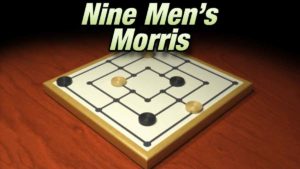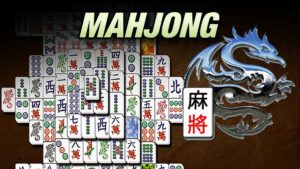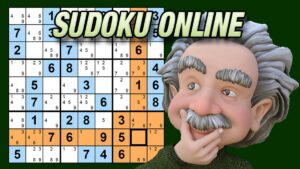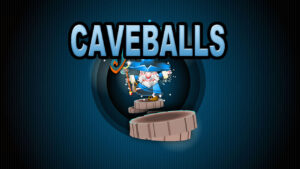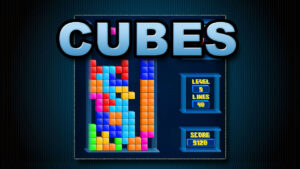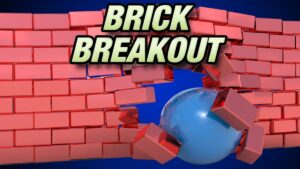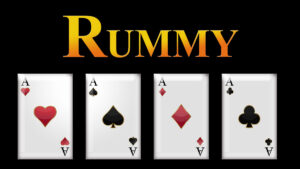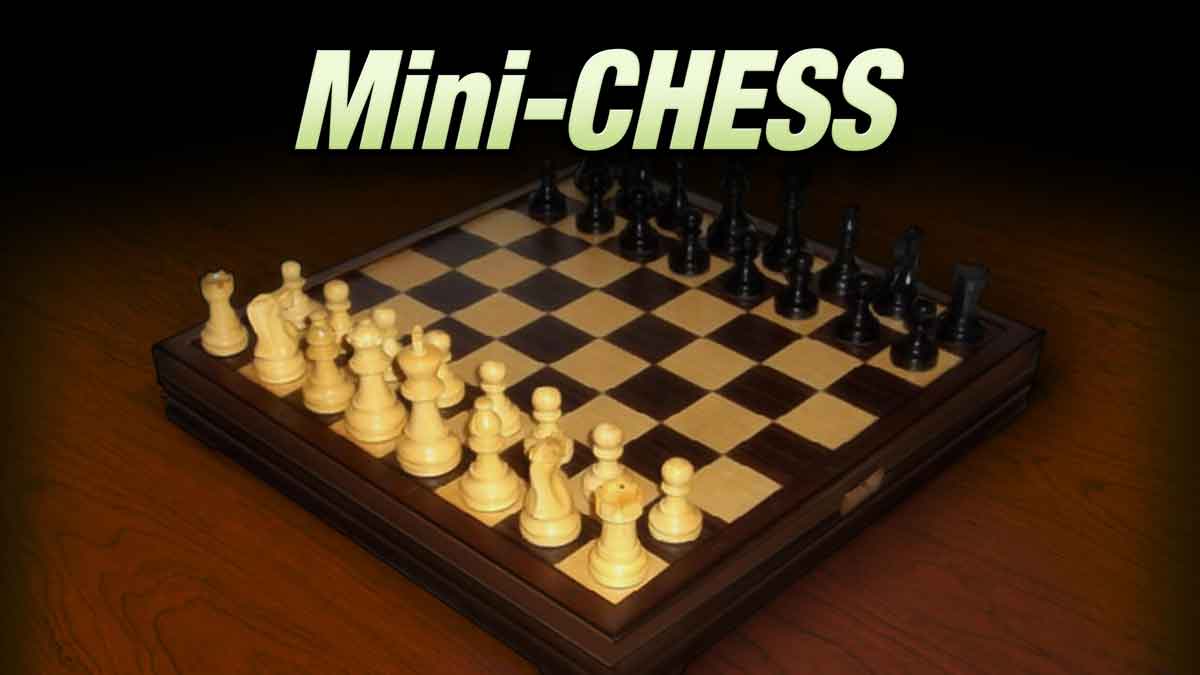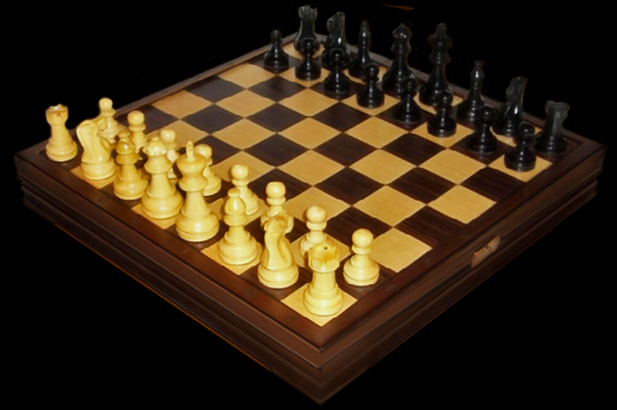

Easy online chess game
Play Mini-Chess online against the computer or versus a friend:
This free game opens as a web page. No installation. Mobile friendly.
This is an easy chess online game with a low difficulty level, suited for beginner and low-level chess players.
Embed the chess game on your website/blog.
How to play chess
A quick Chess introduction for beginners
Chess board position
Chess is played by two players sitting across from each other. The board is positioned with a white square in the bottom-right corner towards you.
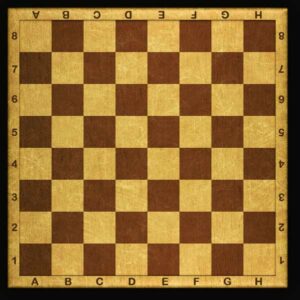
Chess setup
Your second row is filled with pawns. Starting from the left corner, your first row is set up as rook-knight-bishop-queen-king-bishop-knight-rook. The black pieces should mirror the white pieces so that each player’s Queen and King are across from each other.
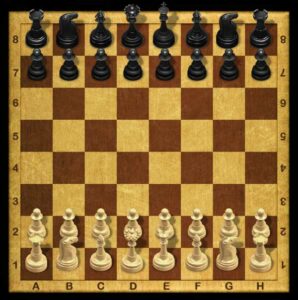
Moving the Chess pieces
The object of the game is to capture your opponent’s king. This is done through the movement of your pieces. Different pieces move in different ways:
The King can move one square in any direction.
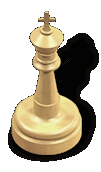
The Queen can move any direction and any number of squares.

The bishops can move diagonally any number of squares.

The Knights move in an L-shape, two squares up back or side to side then one square perpendicular to the first move or vice versa, moving one square then two squares. The knight is the only piece that can move over other pieces.
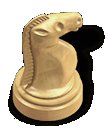
The rooks can move forwards backwards and side-to-side any number of squares.
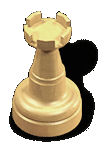
The pawns can move one square forward, except for a pawns first move which can be one or two squares forward.

Chess rules
When a piece makes a move that ends on an opponent’s piece that piece is captured and removed from the board.
The pawns cannot capture a piece that is right in front of it. The can only capture a piece that is diagonally in front of them. This diagonal move by a pawn can only be made when capturing a piece.
The game begins with the white player going first. Each player can make one move per turn. Players take turns making moves with the goal of capturing the opposing King in mind.
When a move is made that can result in the opposing King being captured on the next move, “check” is announced. When check is announced, the opposing player must take the King out of danger by either moving the King or moving another piece to block it or capture the piece that is threatening the King.
When a move is made that a king cannot escape “checkmate” is announced. A king cannot make a move that would put itself into check. If no moves can be made without putting a king in check, the game is a draw.
If a pawn makes it all the way across the board it can be promoted to any piece.
When there are no other pieces between a king and his rook, the King can move two squares towards the rook and the rook is moved to the other side of the King. This is known as castling. The castling move can only be made if it is the King’s first move and the involved rooks first move also. The King cannot be in check or move through check to make this move.
When a pawn moves two squares on its first move an opposing pawn can capture it if it would have been able to capture the pawn had it only moved one square. The opposing piece would move as a normal attack and remove the pawn. This move has to be executed immediately after a pawns double jump move
Beginner Chess strategy
Here are some practical advice for developing your chess skills as a beginner
Understand the Value of Each Piece
Pawns: Worth 1 point.
Knights and Bishops: Worth 3 points each. They’re particularly powerful in the game’s early and middle stages.
Rooks: Worth 5 points. They become more influential as the game opens up.
Queen: Worth 9 points. She’s your most powerful piece but also a prime target for your opponent.
King: The most important piece. The game’s objective is to protect your king while trying to checkmate your opponent’s king.
Control the Center of the Board
Try to control the center squares (e4, d4, e5, d5). This gives your pieces greater mobility and can limit your opponent’s options.
Develop Your Pieces Efficiently
Aim to move each piece once before moving any piece twice. This helps in deploying your forces effectively.
Develop knights and bishops early. Avoid moving the same piece multiple times in the opening unless necessary.
King Safety: Castling
Castling early is usually a good idea. It gets your king to safety and connects your rooks.
Remember, you can’t castle if you’ve moved your king or the relevant rook, if there are pieces between your king and rook, or if your king is in check.
Avoid Premature Attacks
Launching an early attack before developing your pieces can backfire. Ensure you have sufficient support before attacking.
Pay Attention to Your Opponent’s Moves
Always consider why your opponent made a particular move. Look for threats.
Try to anticipate your opponent’s plans and prepare to counter them.
Practice Pawn Structure Basics
Avoid creating pawn weaknesses like isolated, doubled, or backward pawns.
Try to control squares with your pawns, but avoid overextending them.
Simplify When Ahead
If you’re ahead in material (have more pieces or points than your opponent), simplifying the game (trading or sacrificing your pieces) can often put you in a winning position.
Learn Basic Checkmates
Familiarize yourself with basic checkmating patterns like the king and queen versus king, and king and rook versus king.
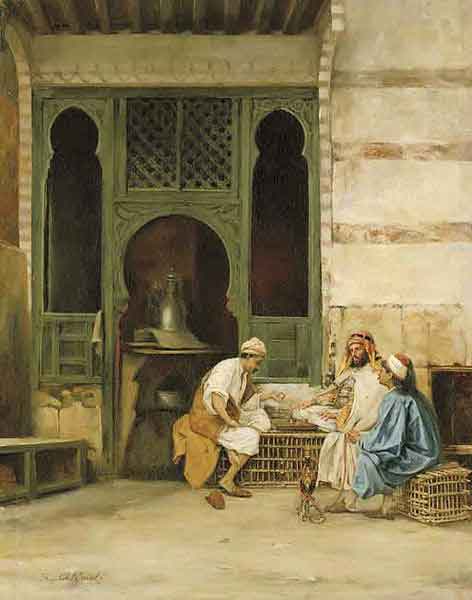
Chess History

Chess originated in India during the Gupta Empire around the 6th century AD. The earliest form of the game was known as ‘Chaturanga’, which translates to ‘four divisions of the military’ — infantry, cavalry, elephantry, and chariotry, represented by the pieces that would evolve into the modern pawn, knight, bishop, and rook, respectively.
The game moved from India to Persia, where it was named ‘Shatranj’. The Persians also introduced the terms “check” and “checkmate”. When the Arabs conquered Persia, chess was taken up by the Muslim world and subsequently spread across the Mediterranean and into Europe.
In Europe, the game evolved significantly. By the late 15th century, the rules of chess had undergone substantial changes. The queen and bishop got their enhanced moves, making the game more dynamic and leading to its modern form. This version of chess was called “Queen’s Chess” or “Mad Queen Chess”.
The Golden Age of Chess
The 19th century is often regarded as the ‘Golden Age’ of chess. This era saw the establishment of standardized rules and the first modern chess tournament in London in 1851. The concept of the chess grandmaster emerged, and the title was first officially awarded in the early 20th century.
Chess in the 20th and 21st Centuries
The 20th century witnessed the rise of world chess championships, with legendary names like Bobby Fischer, Garry Kasparov, and Anatoly Karpov dominating the scene. The advent of computer technology introduced chess engines, which have profoundly influenced how the game is played and studied.
In the 21st century, the internet has revolutionized chess, making it more accessible than ever. Online platforms, streaming, and AI have contributed to a renewed interest in chess, as seen in the surge of popularity following the release of the miniseries “The Queen’s Gambit”.
Chess has had a significant impact on culture and intellectual thought. It’s frequently used as a metaphor for strategy, war, and diplomatic relations. Its influence can be seen in literature, art, and cinema, symbolizing everything from genius and madness to societal struggle.

The Playpager free Chess app is programmed in html5/Js. No flash player needed. Suited for mobile, PC and tablet. No installation or registration. Learn to play Chess! Enjoy. If you like this game, please share. Thanks.
Get the free Chess app:
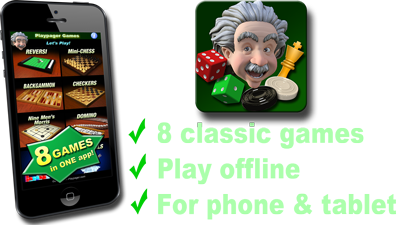

 Fullscreen
Fullscreen Exit Fullscreen
Exit Fullscreen